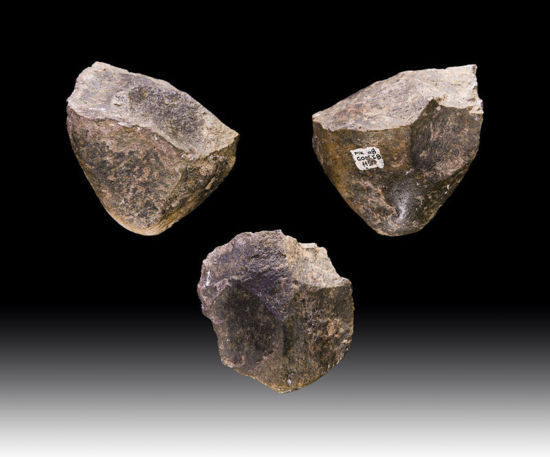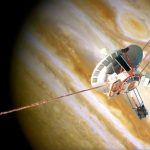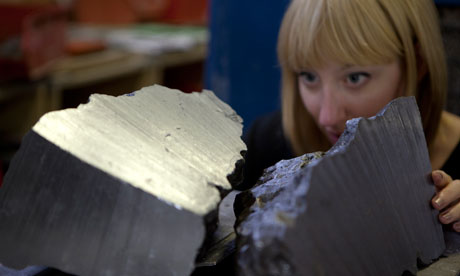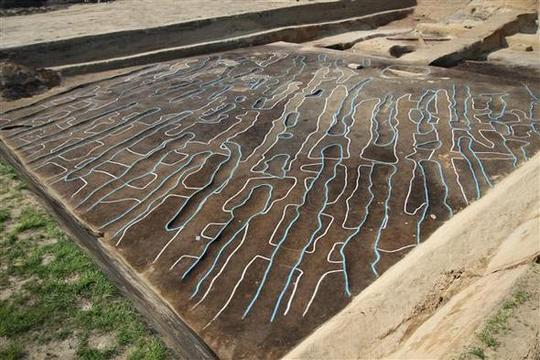Searching for Clues to Calamity

SO far 2012 is on pace to be the hottest year on record. But does this mean that we’ve reached a threshold — a tipping point that signals a climate disaster?
For those warning of global warming, it would be tempting to say so. The problem is, no one knows if there is a point at which a climate system shifts abruptly. But some scientists are now bringing mathematical rigor to the tipping-point argument. Their findings give us fresh cause to worry that sudden changes are in our future.
For those warning of global warming, it would be tempting to say so. The problem is, no one knows if there is a point at which a climate system shifts abruptly. But some scientists are now bringing mathematical rigor to the tipping-point argument. Their findings give us fresh cause to worry that sudden changes are in our future.
Neanderthals Weren’t Stone Age Rodeo Riders?
Neanderthals didn’t ride bucking broncos (as far as we know), but the Stone Age hominids did seem to have one thing in common with rodeo riders: injuries. In 1995, paleoanthropologists Thomas Berger and Erik Trinkaus, now at Washington University in St. Louis, noted that Neanderthals had a disproportionate number of injuries to their heads and necks. The same is true among modern rodeo riders. Just as these cowboys get too close for comfort to angry horses and bulls, Neanderthals’ hunting style—sneaking up on prey and jabbing them with heavy spears—brought their upper bodies within striking distance of large, hoofed animals.
|  |
A Bison So Rare It’s Sacred
GOSHEN, Conn. — If one were asked to pick a typical home where the buffalo roam, the answer probably would not be Litchfield County amid the rolling hills and understated rural chic of Northwest Connecticut.
But when Bison No. 7 on Peter Fay’s farm gave birth to a white, 30-pound bull calf a month ago, it made the Fay farm below Mohawk Mountain, for the moment at least, the unlikely epicenter of the bison universe. For Mr. Fay, what happened was an astoundingly unexpected oddity — white bison are so rare that each birth is viewed as akin to a historic event. |  |
Can astronomers detect exoplanet oceans?
Detecting water on the surface of exoplanets is becoming a high priority for researchers, as surface water is considered a requirement for habitability. New research examines whether or not the "glint" of light from a planet can be interpreted as evidence for surface oceans.
Given the plethora of confirmed exoplanets, many researchers have turned their attention to studying these strange new worlds in greater detail. With several exoplanets thought to orbit in the “habitable zone” of their host star where liquid water might be stable, different methods of detecting surface water are under development. One such proposed method of detecting water oceans on an exoplanet is via specular reflection, also known as “glint”. If you've seen a bright reflection of sunlight on a lake or ocean here on Earth, you've seen an example of the glint effect. |  |
DNA-Sequencing Factory Could Be The Future If It Survives The Present
When Complete Genomics was founded in 2005, scientists had only sequenced the DNA of a handful of people. But its founders, tech entrepreneur Clifford Reid and DNA-deciphering pioneer Rade Drmanac, had an out-of-the-box idea: a DNA factory that would be able to sequence the genomes of large numbers of people on the cheap.
|  |
What Does Space Smell Like?
Astronauts who have gone on space walks consistently speak of space's extraordinarily peculiar odor.
They can't smell it while they're actually bobbing in it, because the interiors of their space suits just smell plastic-y. But upon stepping back into the space station and removing their helmets, they get a strong, distinctive whiff of the final frontier. The odor clings to their suit, helmet, gloves and tools. Fugitives from the near-vacuum — probably atomic oxygen, among other things — the clinging particles have the acrid aroma of seared steak, hot metal and welding fumes. Steven Pearce, a chemist hired by NASA to recreate the space odor on Earth for astronaut training purposes, said the metallic aspect of the scent may come from high-energy vibrations of ions. |  |
Spacecraft's behavior no longer an "unsolved problem in physics"
The Pioneer 10 spacecraft launched from Cape Canaveral, Florida on March 2, 1972. Its planned mission was to be the first man-made craft to traverse the asteroid belt and image Jupiter up close. Pioneer 10's power plant design was required to last for a minimum of two years in space, but the craft was still traveling and transmitting on January 23, 2003—30 years, 10 months, and 22 days later—when the signal became too weak to pick up on Earth. It was 80 AU (12 billion kilometers) away, at the edge of the solar system.
|  |
When a young artist meets an ancient meteorite
A large (120kg) iron meteorite, 4.5bn years old, and found buried in Argentina, 12 feet below the earth in the Formosa province in the strewn field that is known as Campo del Cielo, or Field of the Sky. Although known to natives, the cratered field was first reported in 1576 and is the location of the heaviest natural objects ever found on earth. Looking like a lump of knobbly, dull bronze, it is made of 92% iron, 7% nickel and around 1% of other trace elements.
In its untouched state it has a matt appearance with burnished edges where it has been stroked by human hand or by wind-blown sands. Such meteorites, nicknamed "campos", are popular with collectors and sell at high prices through dealers. Larger, high quality specimens like this might sell for $200 to $300 per kg. |  |
Video: The Dream of a Thorium-Fueled Future
POPSCI
The idea of building small, thorium-based nuclear reactors – thought to be dramatically safer, cheaper, cleaner and terror-proof than our current catalog of reactors – can be shooed away as fringe by some. But the germ of the idea began with some of the country’s greatest scientists, in the U.S. government’s major atomic lab, at Oak Ridge, Tennessee, in the 1960s. And then it was left by the wayside as the American nuclear industry plowed ahead with its development of the light water reactors and the uranium fuel cycle. It’s only in the past half-decade that the idea has picked up steam again on the Internet, thanks to enterprising enthusiasts who have chronicled the early experiments, distributed documents, and posted YouTube videos. But if thorium’s second life on the Internet has grown the flock of adherents exponentially, it’s also pulled in more than a few people whose nuclear expertise doesn’t extend far past Wikipedia, adding a sheen of hype to the proceedings.
Is It a Higgs Boson Imposter?
Physicists have spotted something that looks like the Higgs boson, but what if it's actually a more exotic Higgs doppelganger?
This possibility has been raised by Ian Low, of Argonne National Laboratory in Illinois, and his team who posted an article to the arXiv preprint service on Monday. The Standard Model of physics predicts that the Universe needs a ubiquitous Higgs field that endows all subatomic particles with mass. The Higgs boson is the Higgs field's messenger that interacts with all particles and helps to explain why some particles are massive, while other particles are nearly mass-less. |
How the Lunar X Prize Is a Preview of the New Space Age
Never mind the fact that the Google Lunar X Prize teams won't launch their crafts until 2015. Those teams are already meeting extremely high demand for their still-hypothetical moon missions as different organizations lobby for space onboard.
"Our first mission payload is oversubscribed and our second is fully subscribed," said Alan Stern, director of the Florida Space Institute and chief scientist for the Google Moon Express team. "There are a number of market segments for commercial lunar travel." . |  |
Modern curses threaten Iraq's ancient wonder of Babylon
THE ancient Iraqi city of Babylon is facing a very modern threat from the twin curses of oil and politics.
Once the centre of the ancient world, it has been despoiled in modern times by Saddam Hussein's fantasies of grandeur, invading armies and village sprawl. Now come two more setbacks for the Iraqi city famous for its Hanging Gardens and Tower of Babel: Parts of its grounds have been torn up for an oil pipeline, and a diplomatic spat is hampering its bid for coveted UNESCO heritage status. The pipeline was laid in March by Iraq's Oil Ministry, overriding outraged Iraqi archaeologists and drawing a rebuke from UNESCO, the global guardian of cultural heritage. |  |
Has aviator Amelia Earhart's beauty case been found?

As the search for Amelia Earhart's plane probes the deep waters off Nikumaroro, a tiny desert island between Australia and Hawaii where the legendary aviator may have landed 75 years ago, new clues have surfaced in the artifacts unearthed on the coral atoll.
A variety of fragmented objects collected by archaeologists at a site on the uninhabited island may have originally been American beauty and skin care products, all dating to the 1930s, says a new summary of research by the International Group for Historic Aircraft Recovery (or TIGHAR), which will be published in October by the academic journal Pacific Studies.
A variety of fragmented objects collected by archaeologists at a site on the uninhabited island may have originally been American beauty and skin care products, all dating to the 1930s, says a new summary of research by the International Group for Historic Aircraft Recovery (or TIGHAR), which will be published in October by the academic journal Pacific Studies.
East Asia’s oldest farmland discovered in Korea
The ruins of East Asia’s oldest farmland, where Neolithic farmers planted crops five thousand years ago, have been discovered on the East Sea coast of Gangwon.
The National Research Institute of Cultural Heritage unveiled the recently unearthed remains June 26 in a briefing at a Neolithic site (Historic Site No. 426) in the village of Munam, Goseong County. Estimated to be from the middle Neolithic period some time around 3000 BCE, the ruins are from the first confirmed Neolithic farmland in Korea, China, or Japan. The discovery is being taken as concrete evidence of farming on the Korean Peninsula during the era. Scholars generally believed farming began in earnest during the Bronze Age (1500 BCE--400 CE), when the earliest previously known farmland ruins in Korea originated. |  |
Iron Age 'Sacrifice' Is Britain's Oldest Surviving Brain
The oldest surviving human brain in Britain, dating back at least 2000 years to the Iron Age, has been unearthed during excavations on the site of the University of York's campus expansion at Heslington East.
Archaeologists from York Archaeological Trust, commissioned by the University to carry out the exploratory dig, made the discovery in an area of extensive prehistoric farming landscape of fields, trackways and buildings dating back to at least 300 BC. |  |
Researcher on cloud nine over universe discovery
The mysteries of the evolution of the universe since the Big Bang are one step closer to being solved, thanks to research from The Australian National University.
Astrophysics PhD candidate Mr David Nicholls from the Research School of Astronomy and Astrophysics, part of the ANU College of Physical and Mathematical Sciences, used the ANU 2.3 metre telescope at the Siding Spring Observatory to study distant dwarf galaxies. The galaxies are regarded as ideal ‘laboratories’ for finding out how the Universe has evolved since the Big Bang. |  |
Scientists place 500-million-year-old gene in modern organism
It's a project 500 million years in the making. Only this time, instead of playing on a movie screen in Jurassic Park, it's happening in a lab at the Georgia Institute of Technology.
Using a process called paleo-experimental evolution, Georgia Tech researchers have resurrected a 500-million-year-old gene from bacteria and inserted it into modern-day Escherichia coli(E. coli) bacteria. This bacterium has now been growing for more than 1,000 generations, giving the scientists a front row seat to observe evolution in action. |  |
Gorilla Youngsters Seen Dismantling Poachers' Traps—A First

Just days after a poacher's snare had killed one of their own, two young mountain gorillas worked together Tuesday to find and destroy traps in their Rwandan forest home, according to conservationists on the scene.
"This is absolutely the first time that we've seen juveniles doing that ... I don't know of any other reports in the world of juveniles destroying snares," said Veronica Vecellio, gorilla program coordinator at the Dian Fossey Gorilla Fund's Karisoke Research Center, located in the reserve where the event took place.
"We are the largest database and observer of wild gorillas ... so I would be very surprised if somebody else has seen that," Vecellio added.
"This is absolutely the first time that we've seen juveniles doing that ... I don't know of any other reports in the world of juveniles destroying snares," said Veronica Vecellio, gorilla program coordinator at the Dian Fossey Gorilla Fund's Karisoke Research Center, located in the reserve where the event took place.
"We are the largest database and observer of wild gorillas ... so I would be very surprised if somebody else has seen that," Vecellio added.
Unlock Your Inner Rain Man by Electrically Zapping Your Brain

Imagine a creativity cap. A device that would free you, if only momentarily, from your mindsets, from your prejudices, from the mental blocks to creativity.
These words are emblazoned on the website Creativitycap.com, and they represent the vision of neuroscientist Allan Snyder. Snyder believes we all possess untapped powers of cognition, normally seen only in rare individuals called savants, and accessing them might take just a few jolts of electricity to the brain.
These words are emblazoned on the website Creativitycap.com, and they represent the vision of neuroscientist Allan Snyder. Snyder believes we all possess untapped powers of cognition, normally seen only in rare individuals called savants, and accessing them might take just a few jolts of electricity to the brain.

